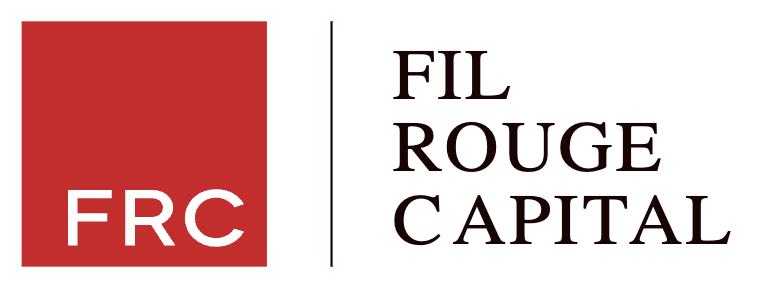The phrase in the title points to a future where truth becomes negotiable
As synthetic media saturates screens, verification lags behind viral speed. That’s why society must study the mechanics before the myths harden.
This piece closes a three-part arc that surveyed the Surveillance State, then Economic Displacement. Here, it traces how perception itself gets edited, and why that shift feels different, deeper, and harder to reverse.
As in our previous articles, we examine dystopia here through the interplay of the micro and macro levels.
When Truth Fades: A Day-in-the-Life Glimpse
You wake to a lock-screen alert about an incoming storm, yet outside the sky is clear. As you scroll, a video suddenly plays: a well-known leader appears to confess to a scandal, the footage raw with emotion. Just seconds later, another video calls it out as fake, but the feed doesn’t pause for clarity. Outrage and confusion keep the momentum going, and soon a message arrives in a friend’s exact tone, tipping you off to a stock play that seems urgent and real.
In an attempt to verify, you ask your smart speaker. The voice answers smoothly, but the information traces back to a paywalled blog, misunderstood by an AI. By lunchtime, your group chat is fractured. Arguments splinter, screenshots circle: every version of reality feels possible.
How Reality Gets Rewritten by AI
Behind these daily glitches, there’s a powerful system working at speed. Everywhere people go, sensors and clicks are used to build a map of their interests and attention. AI models then take all this data to create text, images, and audio that feel personalized and true on demand.
These outputs are pushed directly to users, customized to align with beliefs or cravings they already have. Networks then amplify whatever triggers the strongest reactions, making it harder and harder for real information to catch up when everything starts moving too fast.
Data brokers break identities and habits down into detailed profiles, predicting what people desire. Large language models spin up realistic stories with barely any effort. Diffusion models can conjure photos and footage that have never existed, and voice tools can clone anyone’s tone in minutes. Meanwhile, recommender systems flood feeds with whatever keeps engagement high, whether or not it builds understanding.
Vectors of Manipulation: Deepfakes, Voice Clones, Chatbots, Search
The ways reality is twisted are multiplying. Deepfakes can transform video evidence, planting doubt or targeting reputations. Voice replicas mimic trusted sources to prod people into action or even trick them out of money. Chatbots steer disputes and shape conclusions, directing conversations into carefully managed storylines.
Even search can be manipulated, making genuine corrections and crucial context nearly impossible to find. One well-placed leak can become dozens of different stories, each customized to resonate with specific groups.
Attention Markets and Engagement Optimization
Social platforms are locked in a battle for every minute of attention, and the algorithms they use evolve to promote anything that sparks the biggest emotional reaction: anger, awe, fear, shock. This feedback loop means content isn’t rewarded for being accurate, but for driving repeat engagement. Sensational signals flood the zone, crowding out any matter careful or complex.
AI Dystopia: Manipulation of Reality
In this new setting, AI fragments reality. People end up living in parallel feeds that rarely overlap, each algorithm feeding their expectations and beliefs. When trusted institutions finally weigh in, their statements sound delayed and hotly contested, struggling to rise above the noise.
On social platforms, users might see entirely different versions of breaking news within minutes of each other, adapted to match personal interests or political leanings. Family members in the same home receive news notifications that contradict, which fuels confusion and mistrust at a household level.
AI-powered tools can generate opposing narratives for identical events, causing even small communities to splinter into increasingly narrow echo chambers. As official corrections and fact-checks are buried by rapid cycles of misinformation, the possibility of reaching a widely accepted truth becomes increasingly remote.
Consequences: Trust Erosion, Consensus Collapse, Safety Risks
After endless contact with convincing fakes, skepticism becomes the norm, even for genuine evidence.
Public consensus breaks down; without shared facts, society can’t coordinate, and discussions devolve into clashes of volume and emotional pull. Consensus about basic facts forms the foundation of social order; it enables cooperation, informed decision-making, and mutual trust between individuals and institutions.
When people lose the ability to agree on what is real or true, everyday collaboration becomes nearly impossible. In the absence of a common reality, the very fabric that holds society together risks unraveling, threatening stability and collective progress.
Safety takes a hit as well. Fake alerts, scams, and manipulated news can trigger panic, financial loss, or even put lives at risk, all before real warnings or corrections are able to reach the public.
Elections, Courts, Disasters, and Markets Under Noise
During elections, fabricated footage can flip public opinion at the last minute. Despite efforts to debunk fakes, suspicion always seems to linger.
In courts, contested media bogs down legal processes, forcing expensive and slow investigations just to verify evidence.
Throughout disasters, spoofed alerts can mislead entire communities. When market news gets hijacked by a voice clone or fake filing, sudden volatility becomes the rule rather than the exception.

Speculative Reflection: What Breaks, What Bends, What Endures
As every perception fragments, old fixes and mass communication lose their effect. Local relationships, slow journalism, and trusted archives might just become the anchors people cling to.
New technologies could emerge, like cryptographic tags that prove where content originated, or “civic mediators” who help translate between conflicting feeds. Still, the pressure of AI-infused reality challenges every habit of attention, making it likely that more communities will prize smaller, verifiable circles over global reach.
Personal Agency in a World of Doubt
Despite this storm of uncertainty, people can regain a sense of signal and control, bit by bit. Pausing before sharing emotional claims, checking for proof of where content comes from, and making a point to follow varied media outlets all help to reinforce a clearer reality.
Offline methods like community boards, actual printed records, become tools for grounding oneself in something tangible. No habit alone fixes the entire system, but practicing these steps together helps individuals stay steady amid the swirl of ambiguity.
Closing Reflections
The greatest risk in this AI dystopia extends far beyond the mere proliferation of fakes or manipulated realities; it is the gradual erosion of trust, the overwhelming sense of confusion, and the paralyzing helplessness that arise when certainty itself becomes scarce.
To push back and regain control, a layered response is needed. Designers should build transparency and traceability into digital tools. Policymakers must set rules holding tech creators and data brokers accountable. Just as vital, people can build habits of discernment: looking for facts, thinking before sharing viral content, and leaning on local communities and offline sources for the truth.
Only by combining ethical design, sound policy, and mindful habits can society keep a common ground. AI will keep pushing what’s possible, but the future of public trust rests on staying committed to credibility and transparency, and taking time to verify. If these values stick, even as technology races ahead, the world can stay familiar and manageable.
With this series of articles, we wanted to show what certain negative tendencies might lead to if pushed to the extreme. We hope it gives readers some new perspectives on the future and artificial intelligence.



